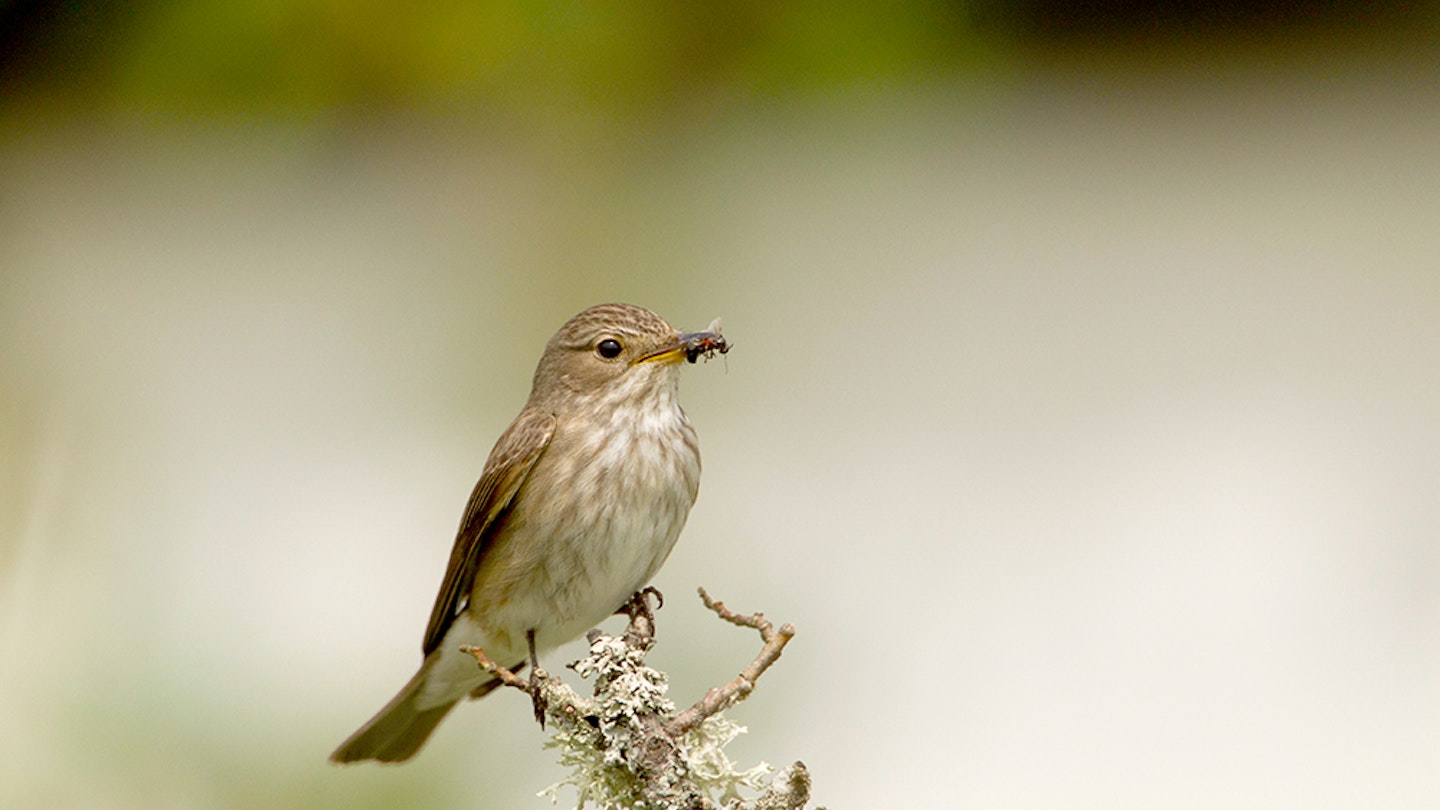All months have their charm for birders. But the heat of summer sees little change in bird populations, and many of us turn our attentions to the delights of other wildlife as extolled by James Lowen in Beyond Birdwatching every month. That said, there are birds to enjoy out there, and what better time to leave your patch for a spell and enjoy some special birds further afield. Like these five species, perhaps?
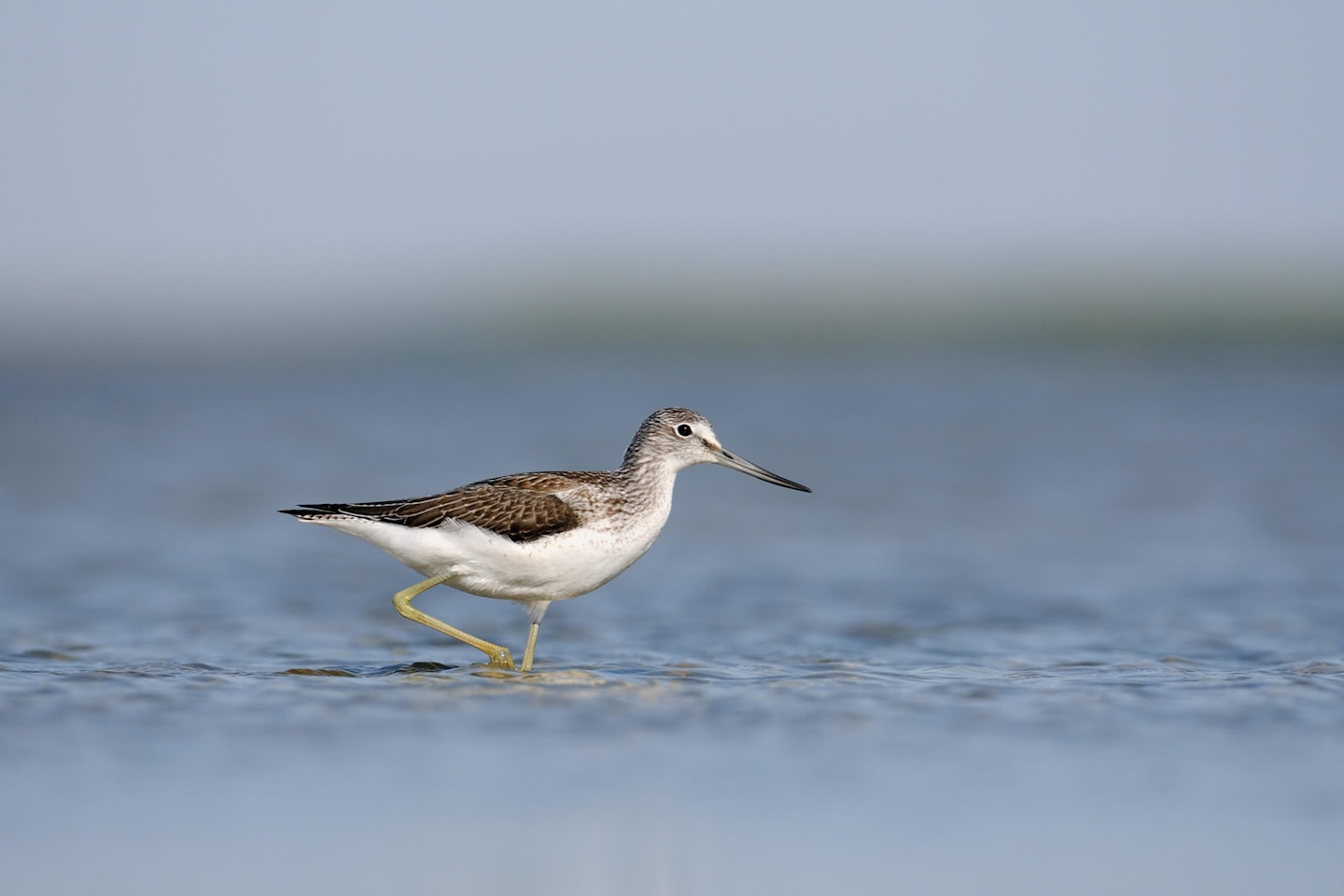
Greenshank
As many as 1,500 pairs of Greenshank nest in northern and north-western Scotland. For the rest of us, it is mainly seen as a passage bird. In July, the first juveniles start to pass south through the country. They are similar to adults, but with a neater pattern of dark back and wing feathers with narrow pale fringes. Greenshanks walk the tightrope between elegance and gawkishness, being long legged, long necked and long-billed but everso slightly ungainly at the same time. The juveniles often reveal their presence with a rather throaty version of the adults’ ‘pew pew pew’ exclamation. Greenshanks are birds of freshwater habitats, where they can chase small fish and invertebrates.
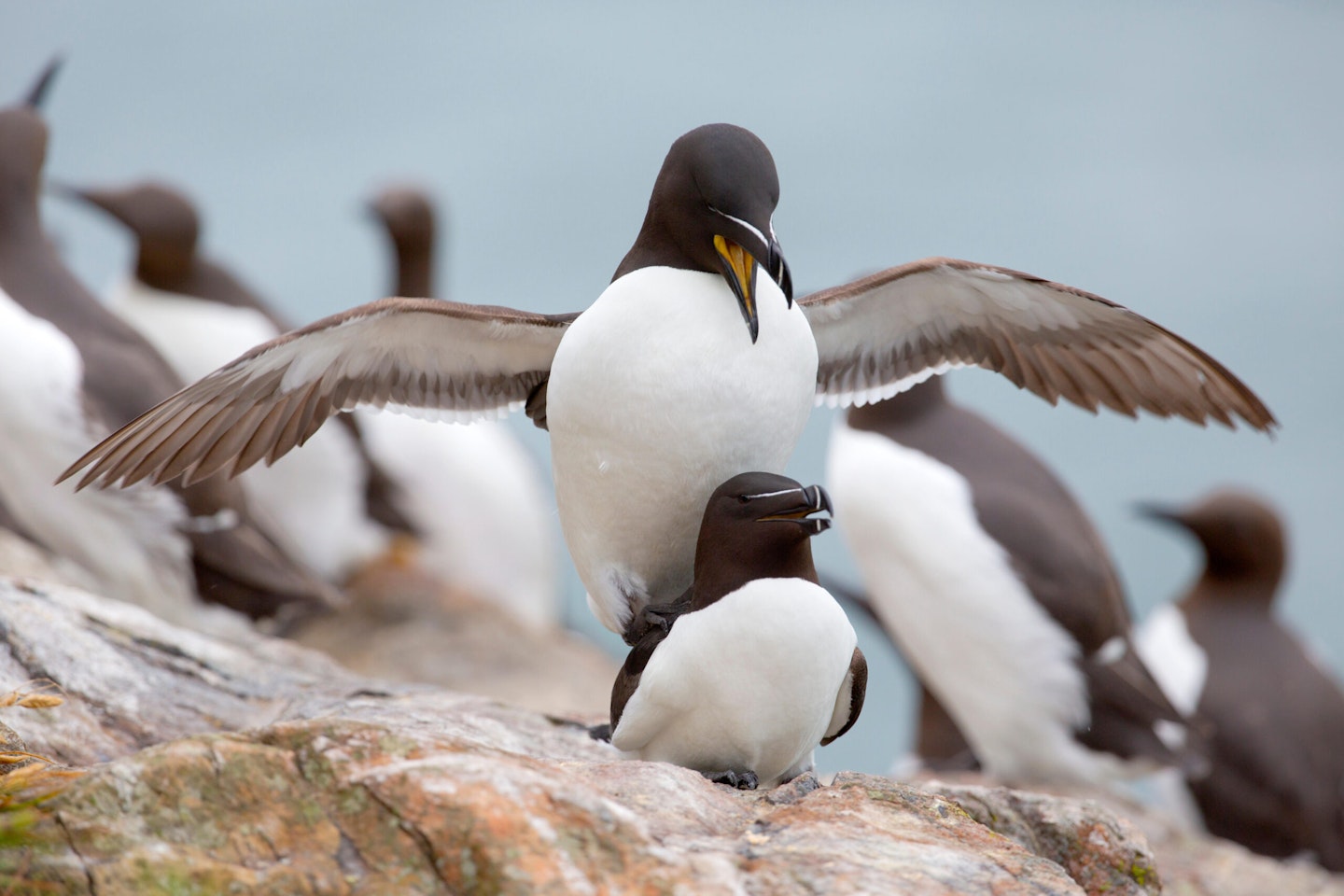
Razorbill
A somewhat astonishing 130,000 pairs of these handsome black-and-white auks nest around the rocky coasts of the British Isles. They are the closest thing we have to a bird resembling the original ‘penguin’, the flightless and sadly extinct Great Auk, though looking quite like a Guillemot, the main distinction is the shape of the bill, which is flattened like that of a Puffin, vaguely resembling an old-fashioned ‘cut-throat’ razor, in black with a white cross stripe. Other distinctions include the black rather than dark brown upperparts and the longer tail, as well as the choice of nesting site, less tied to thin ledges on vertical cliffs.
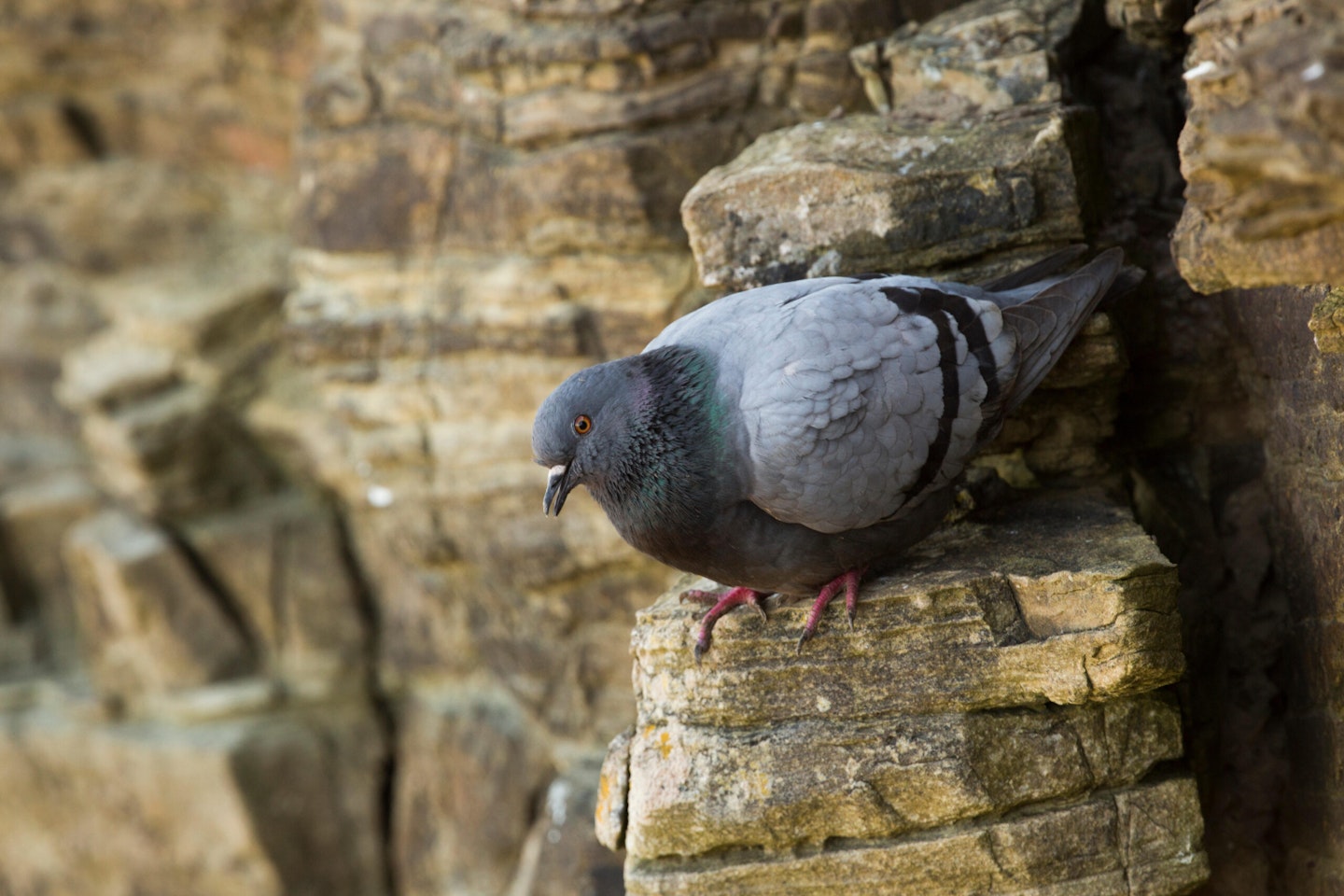
Rock Dove
Here is a dove which does not get enough love. The trouble is the Rock Dove is the ancestor of all the birds we call Feral Pigeons and Racing Pigeons and the line between a pure, ‘genuine’, wild Rock Dove and a Feral Pigeon is somewhat blurred. Some birdwatchers don’t even look at Feral Pigeons, let alone ‘tick’ them or ‘count’ them on their lists. So, coming to terms with a Rock Dove can be a challenge, psychologically! True Rock Doves are believed to be only found on the north and west coasts of Scotland and the coast of Northern Ireland. But birds which look just about indistinguishable from Rock Doves also occur elsewhere, such as some cliffs on the east coast of Great Britain. Wild birds are consistent in their pattern, with two broad dark wing bars and a clean white rump. Go on, give them a bit of love!

Juvenile Mistle Thrush
Comfortably the least common of our three common breeding thrushes (Blackbirds are abundant, and Song Thrushes not too far behind), the big, handsome Mistle Thrush is at times quite a shy and elusive bird, somehow easily forgotten. So, it is often something of a surprise when you encounter a juvenile Mistle Thrush out and about. As with other thrushes, the juvenile resembles its parents but is somewhat spottier especially on the upper parts (with abundant pale spotting) and also has a slightly scruffier look to it. See if you can find one this month.
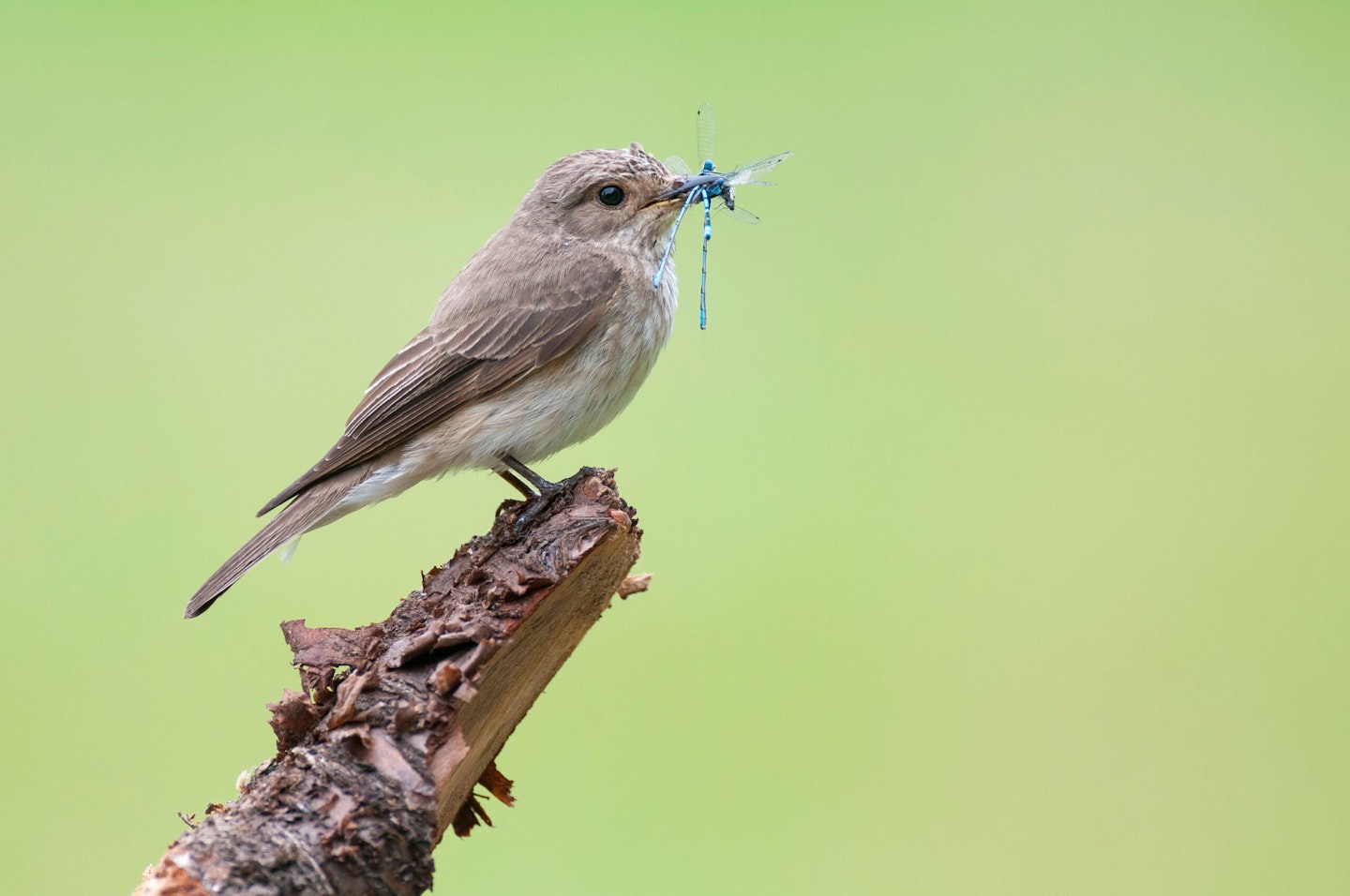
Spotted Flycatcher
Famously poorly named, the Spotted Flycatcher is not really spotted (though the youngsters are notably spottier than the parents), more slightly streaked on the breast and crown. They are flycatchers, though! And at catching flies they excel. They are in many ways nondescript LBJs, but when swooping gracefully to snap the bill (audibly) on a flying insect, before sweeping back elegantly to the perch whence they came, the bird elevates itself to something wonderful.
